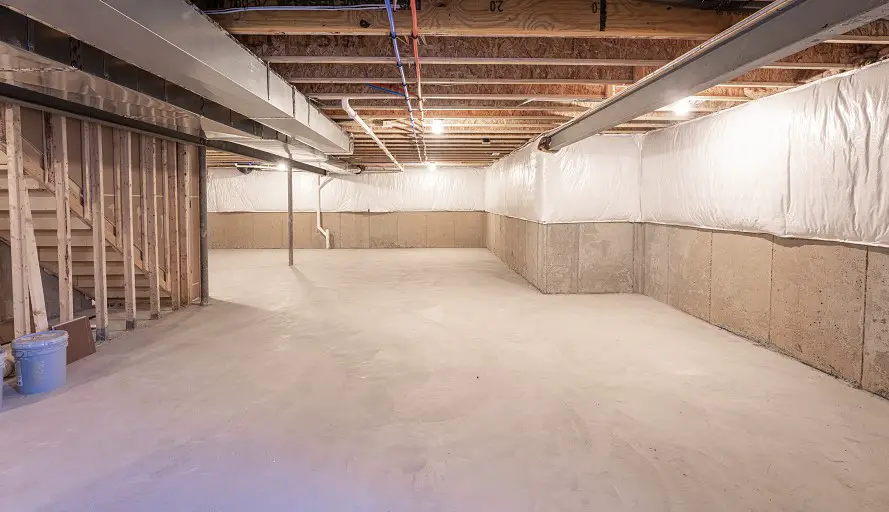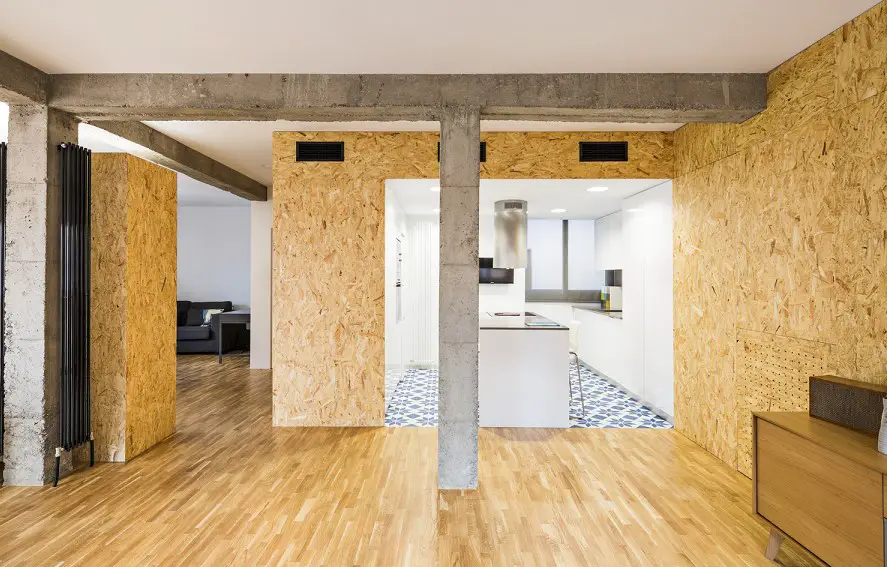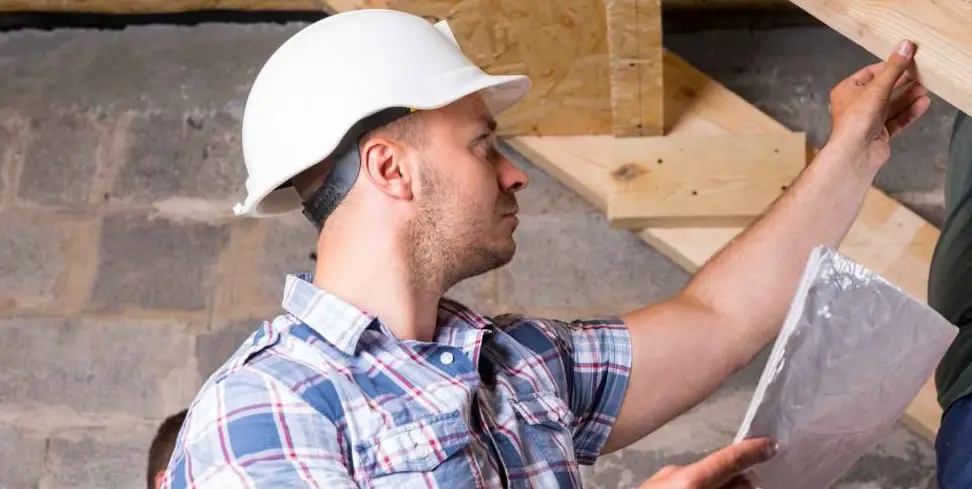The most important details in this text are that some other materials and applications can be used to decorate your basement walls (laundry room or crafts room) without using drywall.
These options to finish walls range from traditional options like paneling and wallpaper to more modern alternatives such as faux stone veneer. This article will explore some of these options and discuss how they may work best in your space.

Contents
- 1 Introduction to finishing walls in the basement
- 2 What are the alternatives to drywall?
- 3 Benefits and drawbacks of various materials used
- 4 Basement finishing: painting ideas for basement conversions and common precautions
- 5 Basement remodel: installing furring strips on concrete walls
- 6 Basement renovation: painting and paneling options for basement walls
- 7 Requirements for implementing non-drywall finishing methods
- 8 Wall covering ideas: installing wood planks directly on wall studs downstairs
- 9 How to install faux brick panels on concrete block walls?
- 10 Guidance on tools and components needed
- 11 Step-by-step instructions on different ways to finish a basement wall
- 12 DIY challenges and solutions for finishing a basement wall without drywall
- 13 Concrete floor options for basements
- 14 Cost
- 15 Safety considerations when finishing basement walls
- 16 Conclusion
- 17 FAQs
Introduction to finishing walls in the basement
Finishing basement walls can be a challenging task, especially if the walls are made of cement. One common approach involves installing wood studs over the cement walls and attaching wall material, such as drywall or cement board, to the studs using masonry nails or screws.
Another option is to use steel framing instead of wood, which can be a good choice in areas with high humidity or water damage.
The specific approach used depends on the basement layout and the condition of the existing wall, as well as any structural wall elements that need to be accounted for.
Regardless of the approach, finishing basement walls can transform an unfinished basement into a functional and attractive living space.
What are the alternatives to drywall?
If you’re looking for an alternative to drywall, there are some options available. Here are some of the most popular alternatives:
Paint
Painting basement walls is a cost-effective way to finish them. It is easy and can be done quickly, and can be used with almost any type of paint. It is not as durable as drywall but is a budget-friendly solution.
Laminate paneling
Laminate paneling is a cost-effective option for finishing walls without drywall, easy to install, durable, and water-resistant, making it ideal for basements with moisture issues.
Styrofoam panels
Styrofoam panels can be used to cover concrete walls in a basement without using drywall. They are lightweight and easy to install and offer excellent insulation properties. However, they are flammable and should be installed away from heat sources or potential fire hazards.
Benefits and drawbacks of various materials used
Basement and cellar walls are usually finished with several different materials, each with its benefits and drawbacks. Let’s take a look!
Drop ceilings
Drop ceilings are a popular option for covering up concrete blocks or paneling. They are easy to install and come in a variety of colors, textures, and sizes. However, they have to be installed relatively low, as the panels attach directly to the joists above them.
Fabric
Fabric is an inexpensive option for transforming basement walls into something more visually-pleasing, but it is less durable than other materials due to moisture damage, staining, and other wear-and-tear issues.
Paint
Paint is an affordable and easy way to disguise basement walls without adding too much cost or complication. It provides an affordable and relatively easy way to mask imperfections in the wall before painting over them, but it does require repainting if there is any staining due to moisture or mold buildup.
Basement finishing: painting ideas for basement conversions and common precautions
Painting is an easy and cost-effective way to finish up walls without drywall. Concrete walls provide a great base for painting, and there are endless possibilities for colors to create a warm and inviting atmosphere.
When it comes to painting basement walls, there are two precautions you should keep in mind:
The porous surface of concrete walls
The porous surface of the walls can soak up moisture from the atmosphere, which can cause cracks over time. This is why you should use sealed masonry paint or add a sealant to cement walls before painting them.
Moisture exposure
Moisture can easily seep out of a concrete block wall, so it is important to check the material used and use the appropriate paint. If necessary, apply a waterproofing sealer or waterproofing paint before applying conventional paint to protect against moisture seepage and prevent damage to painted surfaces.
Basement remodel: installing furring strips on concrete walls
Furring strips are a cost-effective way to finish your walls without drywall. Furring strips are narrow boards that provide a stable mount for wall coverings and can be connected directly to the surface of the concrete wall. Installing furring strips is straightforward, and requires minimal tools or materials.
If properly installed, they can provide a highly durable finish that will look great for years to come. They can also be easily removed should you decide to change up your whole basement wall remodel or design later on.
Basement renovation: painting and paneling options for basement walls
While drywalling may not be an option due to the cost and complexity, there are still great alternatives that can give you the appearance of a more finished basement. Painting and paneling are both good options to get a more home-like feel without going through the hassle of drywalling.
Painting
Painting is one of the quickest and easiest ways to liven up your basement walls. Applying a coat of paint is an inexpensive way to improve the overall look of your room. Consider keeping it light with brighter colors, which helps reflect more natural light if you do not have many windows down in your basement.
Paneling
Paneling is a great option for finishing your basement walls, as it provides texture, warmth, and a sense of luxury.
You can choose from traditional wood wall panels or lighter-weight panels that resemble stone or brick.
By adding either paint or paneling, you can create an inviting space in your basement instead of just leaving bare concrete walls. It is also more cost-effective than investing in drywall but still allows you to create a truly finished basement space that feels like home.

Requirements for implementing non-drywall finishing methods
You should pay special attention to the details like the requirements for implementing drywall alternatives and non-drywall finishing methods for basement walls. These include wall insulation, sealing the surface of concrete walls with an acrylic sealant or paint, and adding finishing covers.
These can be anything from wallpaper and paneling to tile and fabric wall hangings. The goal is to achieve good insulation values and create an inviting atmosphere in any room of the house.
Wall covering ideas: installing wood planks directly on wall studs downstairs
Installing wood planks directly onto wall studs is a popular way to finish basement walls without using drywall. This type of arrangement is cost-effective and provides an easy way to quickly finish your walls without having to install sheetrock.
It also allows homeowners to customize their space by adding shelves and cabinetry, fabric or wallpaper, and other design styles. Additionally, it can accommodate basements with odd shapes or sizes. These advantages make it a great way to create a modern, stylish look without having to purchase and install traditional drywall materials.
How to install faux brick panels on concrete block walls?
If you’re looking for a way to spruce up the look of your basement walls without undergoing a complex and costly drywall project, faux exposed brick side panels are the perfect option. Installing faux brick panels on concrete block walls might seem intimidating, but it’s not that hard—it just takes a bit of time and effort. Here’s how to do it:
Step 1: Clean the wall
First, you’ll need to ensure the wall is completely clean and free from dirt, dust, and other debris before beginning. Use an all-purpose cleaner or warm water with dish soap and lightly scrub the wall with a sponge or rag. Allow all the walls and surfaces to dry completely before moving on to the next step.
Step 2: Apply adhesive primer
Once your wall is clean and dry, it’s time to apply the adhesive primer. This can typically be found at any home improvement store or online retailer of your choice. Make sure to follow all manufacturer instructions for application, as this is an important step for ensuring that your faux brick wall panels really will stick properly.
Step 3: Cut panels to fit
Next, you’ll want to measure and cut your panels to fit over specific sections of the concrete wall. Make sure that there are no gaps between each panel so that they fit snugly against one another without leaving any space. It’s also essential to use a ruler when measuring basement panels to ensure accuracy.
Step 4: Install panels
Faux brick panels should be applied to the wall starting at the bottom and working up to cover the entire wall.
To install the panels, they should be covered with construction-grade adhesive and screwed or nailed in place.
The specific steps may vary depending on the type of faux brick panels you are using, so it is significant to follow the manufacturer’s instructions.
Guidance on tools and components needed
The most significant details are the tools and components needed to finish a basement wall without drywall. Tools include an electric saw or jigsaw, drill, and caulking material.
Components include plywood boards, paneling or insulation boards, waterproofing material, joint compound, joint tapes, and other sealants. With these pieces on the wall, it’s time to get started and make the bare concrete wall into an eye-catching place.
Step-by-step instructions on different ways to finish a basement wall
Don’t sweat it—there are still plenty of options for finishing a basement wall without drywall. Here’s a step-by-step guide on how to do it:
Concrete sealer
Concrete sealer is the most accessible and cost-effective way to finish a basement wall. Simply clean the wall and apply the sealant. You can find various types of concrete sealers at hardware stores that are specialized in water- and epoxy-based products. All you need to do is choose the right one for you, depending on what you want in terms of color, smoothness, and protection.
Acrylic paint
Acrylic paint is easy to apply with a roller or brush and gives your walls a professional finish. It’s perfect for giving your walls a stylish, finished look in whatever color you choose—whether it’s muted or vibrant.
Wallpaper
Wallpaper is another great way to finish a basement wall without drywall — there are many types of wallpaper available in different styles, textures, and patterns that can give your walls some character. Apply wallpaper adhesive first before sticking it on the wallpaper, as this helps keep it from peeling off in due time.
Corkboard
Corkboard panels offer quite a lot of insulation against damp air in your basement, and this makes them an attractive alternative for people looking for more than esthetics from their walls — their insulating effect also helps regulate temperatures throughout the house much better than regular concrete walls. And if you like DIY projects, they’re fun to install!
DIY challenges and solutions for finishing a basement wall without drywall
It is possible to finish your basement walls without drywall, but there are a few challenges that need to be addressed. These include outdated electrical wiring, damp wall spaces, ground, and rainwater leakage, cracks in foundation walls, and plumbing issues.
DIY solutions include waterproof paint, epoxy injection systems, or other specialized materials that keep moisture out of the basement area while also providing an attractive surface covering material. To create a pleasant living space, it is important to fix any water issues before doing any type of wall covering application.
Concrete floor options for basements
When it comes to concrete floor options for basements, several choices can work well. One option is to paint the concrete floor, which can be a cost-effective and easy way to improve the look of the space. Epoxy is another popular choice, as it is durable, easy to clean, and can create a variety of unique designs and patterns.
Tile, rubber flooring, vinyl planks, and engineered wood are also good options for basements with concrete floors, as they are all durable, moisture-resistant, and easy to clean.Carpet tiles and luxury vinyl planks or tiles can also be good choices, particularly for basements that serve as living spaces or play areas.
Ultimately, the best flooring option depends on your specific needs and preferences, as well as the condition of your basement floor.
Cost
Based on the latest search results, finishing walls in the basement without drywall can cost anywhere from $0.80 to $3.00 per square foot using basement panels. However, the total cost of finishing a basement depends on a variety of factors, including the size of the space, the materials used, and any additional features or amenities that are included.
On average, framing a basement costs about $7 to $16 per linear foot, while building the ceiling can cost between $1.60 and $2.50 per square foot. Based on these estimates, the total cost of finishing a basement without drywall is typically in the range of $32 to $47 per square foot.
Safety considerations when finishing basement walls
Finishing your basement walls is a great way to add value to your home, but there are safety considerations to consider.
Check for moisture in the concrete and choose finishes that are fire-retardant.
Check with local building codes for regulations related to fire safety and be aware of potential allergens. Choose finishes that are mold-resistant and mildew-resistant, and low off-gassing, so they don’t trigger allergies or asthma in family members or visitors.

Conclusion
Finishing basement walls without drywall is an effective and affordable option to save time, money, and effort. With the right materials and work, you can achieve the same look and feel as drywall while still providing a sturdy and durable support structure. You can also add unique touches like faux brick, steel framing, wood studs, or tile.
FAQs
What is the cheapest way to finish basement walls?
Drywall is usually cheaper than paneling. Because installation requires less detail and finish work. Drywall soundproofs are better than paneling and is easier to repair.
Does a finished basement need drywall?
Drywall is a popular choice for finishing basement walls, but alternatives such as wood paneling, faux brick panels, or cement board may offer advantages such as increased durability, moisture resistance, and soundproofing. The choice of wall finishing material should be based on personal preference, budget, and the intended use of the basement.
Read More: Finishing a Basement without Drywall



